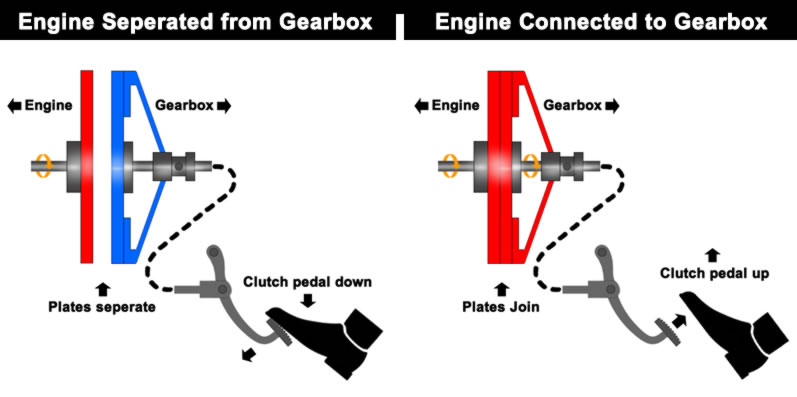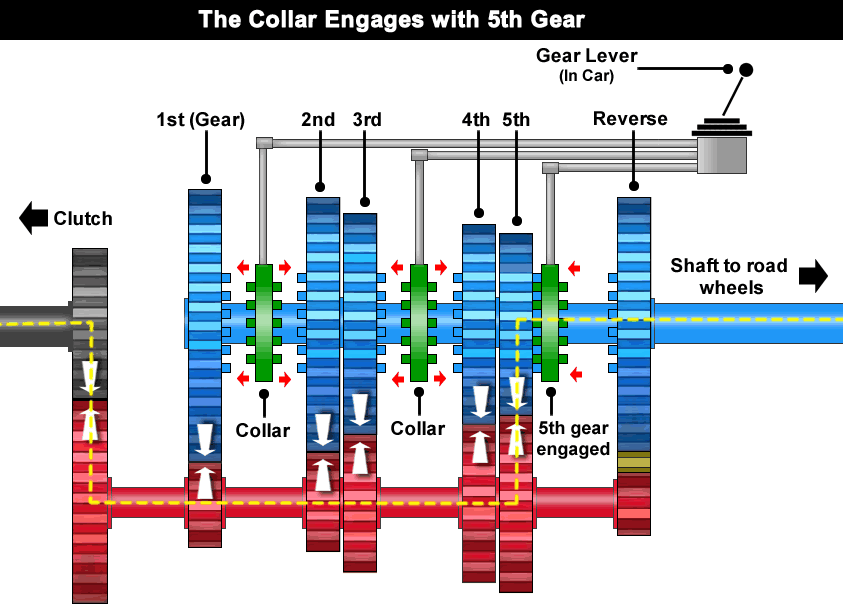How Do You Change Gears Smoothly?
As a learner driver, part of learning how to change gears is to do it smoothly. But the fact is, even experienced qualified drivers have off days where grinding the gears and jerking the car when changing occurs.
How do you change gears smoothly? It requires precise timing and accurate operating of the controls. Explained below are some tips on how to change gears smoothly.

Press the Clutch Pedal all the Way Down
When you’re driving, the engine connects to the clutch, then to the gearbox, then to the road wheels. Different gears (or cogs) inside the gearbox rotate at different speeds and in order to change gear, the gearbox needs to be disconnected from the engine and this is the job of the clutch.
Think of the clutch as two plates that press together to connect the engine to the gearbox. When you press the clutch pedal down, these two plates separate, disconnecting the gearbox from the engine.
Now that the gearbox has separated from the engine, the gears inside the gearbox can speed up or slow down to match the same speed as the road wheels. A ‘collar’ connects the gears to the shaft that goes to the road wheels. We’ll get more into that when we talk about gears.
If you do not press the clutch pedal all the way down, the clutch plates may still be partially connected. This means the gears (or cogs) may not be able to slow down or speed up and synchronise their speed properly which may result in you not being able to change gear smoothly. See how gears work in a manual car for further information.

Be Gentle with the Gears
Inside the gearbox are of course a set of five or six forward gears and a single reverse gear. When you change gear, the collar (which is another cog) connects the gears to the rear wheels. The collar is fixed to the shaft that goes to the rear wheels and so when the clutch pedal is pressed down, the gears need to synchronise their speed to match the speed of the collar.
If you try to push a gear in too hard or too fast, the gears may not have had sufficient time to syncronise with the collar and a grinding sound may be heard. Essentially use moderate pressure when changing gears rather than to push or pull them with too much force.
Bring the Clutch Up Slowly
As we’ve said, the clutch comprises of two plates – one that’s connected to the engine and rotating at the speed of the engine and the other plate which connects to the gearbox shaft. The clutch plate on the side of the gearbox slows down or speeds up depending on the speed of the gearbox gears – which in turn is determined by the collar that connects the rear wheels.
When you bring the clutch pedal back up, the clutch plates join back together. The clutch plates must now synchronise their speed to form the compete connection. If you bring the clutch pedal up very quickly, the plates slam together causing the car to jerk and judder. Bring the clutch up slowly to help maintain smooth gear changes.
Take Your Time
Changing gear smoothly requires accurate operation of the controls, all of which requires perfect timing. If you’re struggling to make smooth gear changes, slow the process down into three parts:
- Clutch down
- Gently change gear
- Clutch slowly up
When gears crunch and your car jerks, it’s usually because you’re not timing the gear change correctly. Slow the gear change down and the more you practice, the smother and faster the gear changes will become.
am driving for quiet a while now but still wondering why so early have change the clutch lining. i have cpme across the topic of early clutch ewar and tear and its very informative thanks. hope can now let clutch live longer. thanks